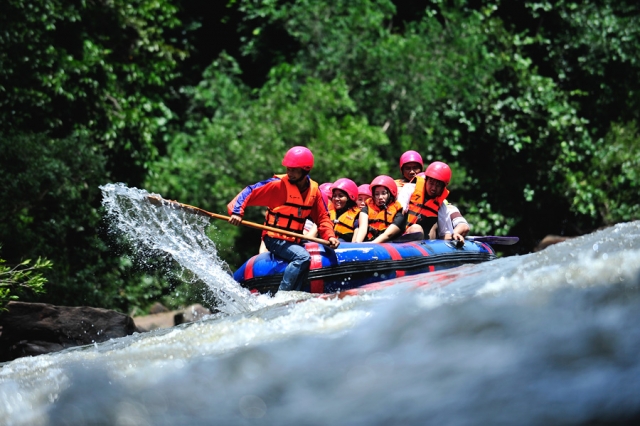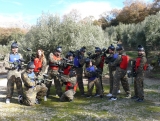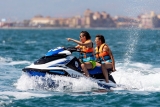Let’s remember that rafting is the sport where you descend a river in a raft with a group, navigating rapids and chutes. We don’t consider rafting dangerous, but as with anything, it’s best to be prepared and have basic safety knowledge. With these tips, I assure you the descent will be completely safe. Pay attention:
Essential Equipment
First and foremost, it’s essential to wear certified gear specifically designed for this sport. Don’t worry if you book through specialised rafting companies, as they’ll provide all or nearly all the equipment.
This includes:
►Rafting Raft
►Rafting Paddles
It’s CRUCIAL that you NEVER go to the river alone. It’s advisable to always go in groups of 2 or more rafts and highly recommended (almost essential) to have a guide, as they’ll navigate for you and know the river inside out.

They’ll tell you what to do at every moment and assist you in case of any mishaps. They’re often called "river rats" and are trained professionals in first aid who master both the environment and the safety techniques and manoeuvres of this sport.
What to Bring on the Raft
It’s also very important to be cautious, as we’re ultimately challenging raw nature. Ropes, a first-aid kit, food, and water should be part of your essential support pack. It’s also a good idea for each participant to carry a safety whistle.

If a group member falls into the water and is carried by the current, it’s easier for guides and other rafts to locate them.
In Case of a Fall
If someone falls overboard, the first thing to do is stay calm and steady your nerves. Panicking won’t help. If you capsize, float on your back with your feet forward to guide your trajectory and avoid submerged obstacles (remember, the current is strong and may carry logs, rocks, etc., that you won’t see). Finally, swim to a safe spot.

The guide may also move ahead, and if you’re in the right position, you can grab a "throw bag"—a safety device the guide will toss to you, consisting of a floating rope in a rescue bag.
Guides usually carry one on their waist, and the mechanism is simple, though it’s advised to "practise" and learn the techniques beforehand, as misuse can be dangerous.
Now that you know a bit more about rafting safety, go for it—it’s one of the most rewarding experiences out there. Still, we recommend checking out these pre-rafting tips.











